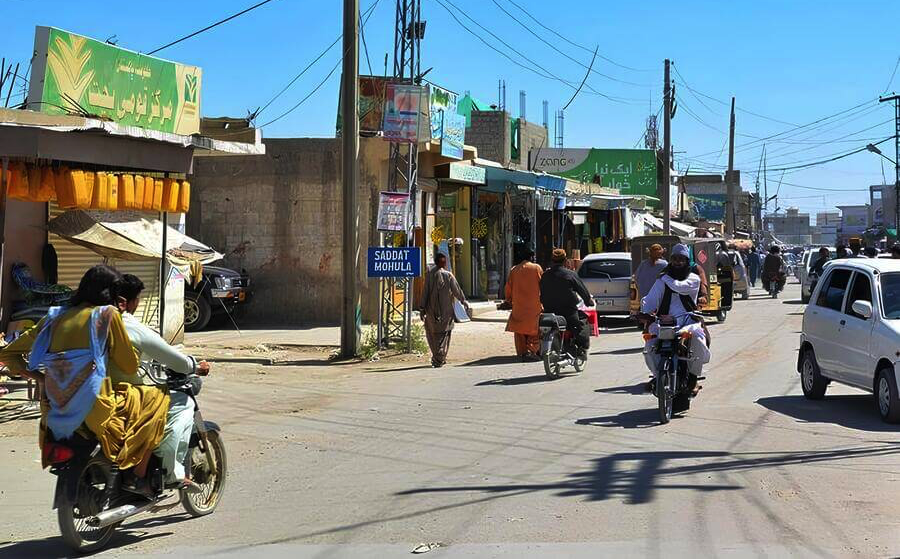By Asadullah Raisani
It is not the first time in the country’s history that Balochistan has become a buzzword. Whether it’s politicians, academics, media personnel, analysts, or even members of the armed forces, Balochistan is being discussed on every platform and at every level today in Pakistan.

Unfortunately, such conversations/discussions often center on issues, rather than on what can genuinely be done to end the persistent and seemingly endless nazuk daur (difficult period) in Balochistan.
Even when it comes to the problems in Balochistan, many people lack a clear understanding of the causes of chaos in the province. Some blame the Sardars (tribal princes) for all the problems, while others believe that the center has not given the Baloch their due share of natural resources and minerals. There are also those who argue that certain organizations have impeded the political process from taking root in the province. And there are also people with views that Balochistan is suffering due to external involvements in the region, as the province lies in a geopolitical “crush zone.” Not all of these views are entirely inaccurate; in fact, they are partly correct to some degree.
However, to identify a genuine course of action for the future, the problems in the province can be better understood by comparing previous insurgencies and struggles with the current one, and by recognizing that Sardars are becoming increasingly irrelevant to the province’s issues today.
Balochistan has witnessed multiple insurgencies since 1948, each rooted in political exclusion, perceived injustices, and led by Sardars. According to renowned authors and academicians such as Sher Muhammad Marri in Baloch Qaum, Selig S. Harrison in In Afghanistan’s Shadow: Baloch Nationalism and Soviet Temptation, Taj Mohammad Breseeg in Baloch Nationalism, and Rizwan Zeb in Ethno-Political Conflict in Pakistan: The Baloch Movement, the first rebellion occurred when Prince Abdul Karim, the brother of the last Khan of Kalat, Mir Ahmed Yar Khan, opposed Balochistan’s accession to Pakistan.
The second uprising followed the imposition of the One Unit Scheme (OUS) in 1955, which led to the Khan of Kalat’s protest and Nawab Nauroz Khan’s revolt. The third insurgency began in 1962, when President Ayub Khan stripped Baloch leaders of their traditional titles, sparking armed resistance. However, these insurgencies were relatively short-lived.
The most violent insurgency ensued when the elected Balochistan government was sacked by Zulfiqar Ali Bhutto in 1973. As various sources report, thousands died in this insurgency. Even though the province was relatively peaceful between 1977 and 1999, such tribal leaders as Nawab Khair Bakhsh Marri, Nawab Akbar Bugti, and Sardar Attaullah Mengal held great tribal power. Whether exiled or politically suppressed, these Sardars were vital parts of the Baloch identity and politics; they were advocates of the Baloch rights and the Baloch autonomy.
The ongoing insurgency and agitation in Balochistan have been active since 2004 and intensified following the death of Nawab Akbar Bugti in 2006, an event that triggered widespread unrest. The uprising stemmed from deep-rooted grievances related to political marginalization and the control of natural resources. It has since become the longest-running insurgency in the country’s history.
The tension took an upturn after a rape case of Dr. Shazia Khalid in 2005 that Bugti condemned vehemently and with some demands. His demands were not accepted by the then-President General Pervez Musharraf (1999-2008), causing violent confrontations leading to the death of Bugti. This episode intensified the scale of the insurgency, even in the Makran region, which had not been involved in previous uprisings, and created a substantial boost in recruitments in the separatist militant groups.
However, it is important to understand that Sardars have lost their sway over the Baloch in both the ongoing insurgency and the peaceful struggle for the rights of the Baloch community. The Baloch have increasingly begun to distance themselves from their tribal leaders. Today, many Baloch entering politics idealize figures who emerged from student politics and come from middle-class backgrounds, having reached their current political positions through grassroots activism.
Similarly, those joining or aspiring to join Baloch militant groups do not do so under the influence of any Sardar. Instead, they are motivated by shared aspirations and grievances. As a result, many militants now come from middle-class families rather than from the households of Sardars.
With the mounting fame of some activists of the basic rights of the Baloch community, it is further evident that the Baloch are starting to give up, or many have already given up on Sardars. Even the towering political careers of certain nationalist politicians are sustained by expressing their support for one of such movements that is led by non-Sardars. This brings both clarity and complexity for the authorities as well as for the Baloch.
Historically, it was easier for the state to negotiate with a few tribal chiefs, but today’s unrest is decentralized, involving middle-class Baloch youth acting independently of tribal leadership. This shift complicates efforts to contain the conflict, as modern militants are harder to predict and may have external backing.
Politically, the Baloch are increasingly disillusioned with dynastic leadership, seeking representatives who emerge from grassroots movements and understand their aspirations. This has created confusion, as those claiming to represent the Baloch often lack genuine support, while influential voices are sidelined.
The erosion or thinning of tribal authority presents an opportunity for new, educated Baloch leadership to rise. However, political engineering continues to undermine electoral confidence, deepening alienation. The new generation of Baloch, focused on accountability and justice, may pave the way for a more democratic and inclusive political culture.
Moreover, the trust of the Baloch populace in institutions cannot be restored through mere words or by maintaining a heavy-handed approach. Instead, there is a need to translate words into actions on a war footing, as the people of the province have lost patience due to the long-standing tradition of unfulfilled promises in the province.
Conclusively, Balochistan today stands at a crossroads where old methods have lost relevance. The Sardars no longer define the Baloch voice, and the younger, educated generation is demanding a different kind of politics—one rooted in accountability and rights. If the government and institutions continue to rely on outdated power structures or fail to nurture democratic space, they risk alienating a generation that still holds hope. As John Adams once said, there must be “a government of laws, and not of men.” Balochistan deserves nothing less.
Author: Asadullah Raisani – Research Officer at Balochistan Think Tank Network, Quetta, Pakistan.
(The views expressed in this article belong to the author and do not necessarily reflect the views of World Geostrategic Insights).
Image Source: UN News







